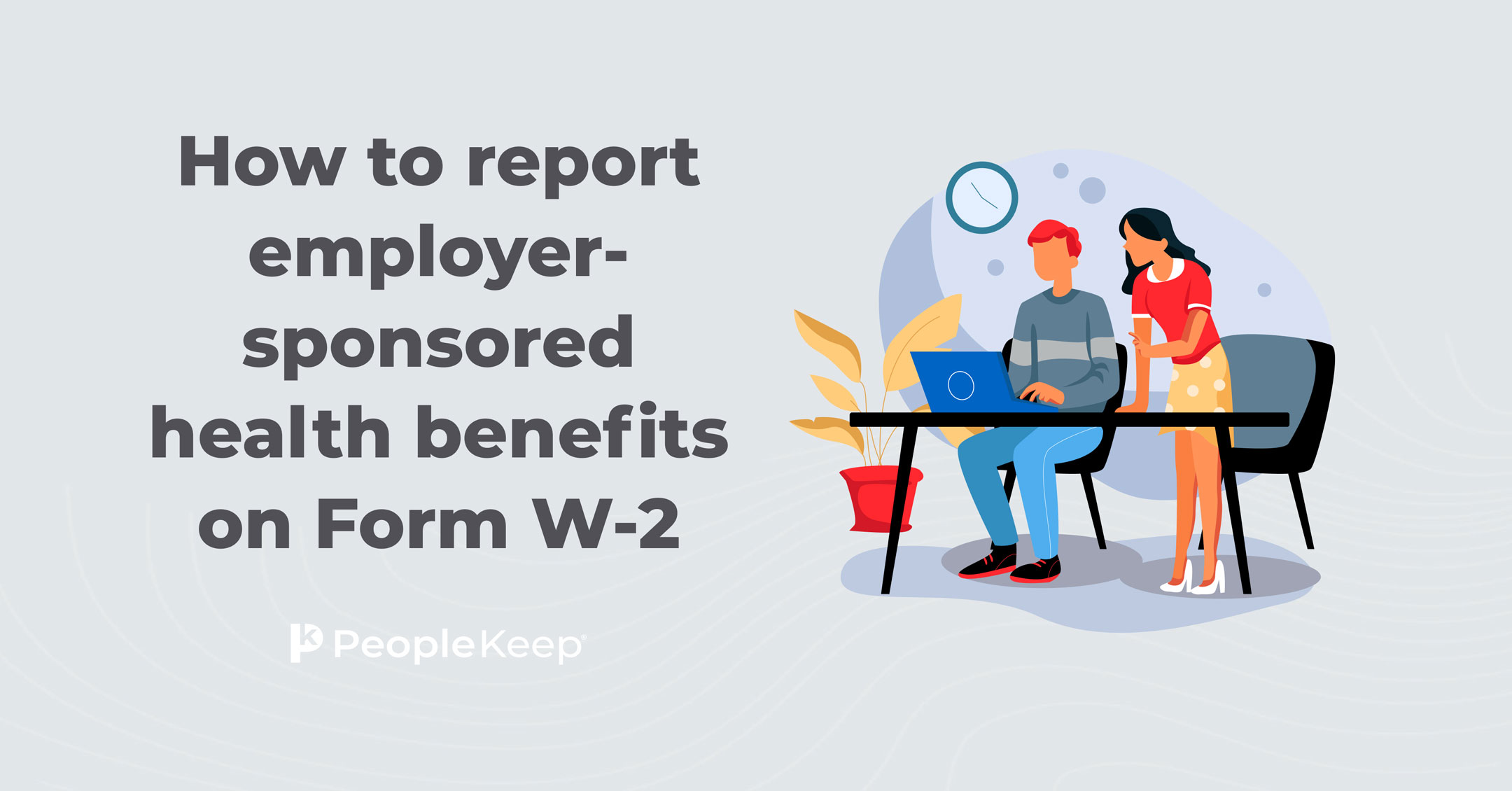Pros and cons of earned wage access (EWA)
By Elizabeth Walker on October 1, 2024 at 8:00 AM
With costs rising nationwide, it can be challenging for the average American to wait for payday. A recent study found that almost half of hourly U.S. employees have no emergency savings, and nearly 80% have less than $5001. To offset this, some employers offer earned wage access (EWA) to help employees meet their financial goals in the middle of a pay period.
EWA is an effective way to give your workers greater financial stability and flexibility. But before setting up EWA at your company, you must determine if it’s right for you and your employees.
This blog will give you an overview of EWA, its pros and cons, and how other personalized employee benefits can help you increase retention.
In this blog post, you’ll learn:
- What earned wage access (EWA) is, and how it differs from traditional paydays.
- The advantages and disadvantages of EWA for employers and employees.
- How you can leverage various employee benefits to improve morale and productivity.
What is earned wage access?
Earned wage access allows employees to access their earned net wages before their scheduled payday. Some companies may also refer to EWA as early wage access, instant payroll, earned income, or on-demand pay.
EWA isn’t a paycheck advance or a predatory payday loan. Payday loans are short-term, high-cost personal loans with steep fees and high interest rates. These types of loans are typically due on an employee’s next payday. Instead, EWA is a way for employees to receive money for every hour they’ve already worked. They can’t receive pay for hours they haven’t worked yet.
Essentially, EWA gives employees instant access to their wages. For example, an employee who finishes their eight-hour shift can immediately request payment for the time they just worked. Using EWA, an employee’s money is available to cover a much-needed bill or an unexpected expense.
How does earned wage access work?
Now, let’s explore how EWA works for both employers and employees.
Employers
The simplest way to set up EWA at your company is to integrate an earned wage access app with your current payroll provider. The app lets you make your payroll deductions before sending your employees’ available net wages.
Employees request their earned wages outside your regular payroll cycle. Because the EWA apps integrate into your payroll system, you don’t need to change your standard payroll process.
The following are some popular EWA apps2:
- ProLiant
- ZayZoon
- DailyPay
- Tapcheck
- Wisely by ADP
Employees
Employees use their chosen wage access app to request their earned wages before their regular payday. They can choose to receive all or part of the wages they have worked. However, most apps charge a withdrawal fee. Some may also have a maximum withdrawal limit between $100 and $500.
Employees can choose to have the app transfer their early wages directly to their bank account or a pay card. They must connect their bank account to the EWA app for direct deposit. With the pay card option, employees can “bank” their money and draw from the wage balance on the card at any time, like a debit card.
With either option, the app deposits the employee’s remaining wages on their regular payday.
The following is an example of how EWA would affect an employee’s regular paycheck:
|
Biweekly paycheck amount |
EWA requested |
Amount employee will receive on payday |
|
$1,000 |
$200 |
$800 |
What are the pros of earned wage access?
1. Improved employee recruitment and retention
Offering EWA can help you entice hourly employees to join your company in a competitive job market. Employers that provide their workers with financial benefits tend to have an edge over their competitors.
EWA can also positively affect your retention rate:
- According to a recent survey, 75% of Millennials said having instant payroll would increase their likelihood of accepting a job3.
- Another survey found that EWA improves employee retention rate by 63%4.
Having flexible pay capabilities is an attractive perk. Once your employees have on-demand access to wages, they’re less likely to leave a job for an employer that doesn’t offer it.
2. Greater employee productivity
Financial stress is a common concern nowadays. And your employees are probably feeling the pressure. If you have financially strapped workers, they’re more likely to fall behind on bills. This may cause them to take a second job, which can reduce productivity at your company.
EWA helps relieve financial stress by giving your employees visibility into their accrued earnings and allowing immediate access to funds. When your employees are financially confident, they’ll be more engaged and productive at work. They’ll also be less prone to stress or feel the need to get a second job.
3. Increased financial wellness
EWA gives employees greater control over their money to cover bills, groceries, and other financial needs. But it can also improve their financial well-being.
About one-third of American workers live paycheck to paycheck with little to no savings5. Unpaid bills and late payments can have a negative impact on a person’s credit score and lead to service shutoffs. Employees who need quick cash may turn to credit cards or payday lenders. But, these options typically have high interest rates and fees.
Access to on-demand pay providers can save your employees from unwanted costs like late fees, bank overdraft fees, or credit card interest. Instead, EWA empowers workers to manage their budgets better and make smarter financial decisions.
4. More money for unexpected emergencies
EWA can also help your employees with unexpected personal emergencies like medical crises or costly car repairs. Employees who experience an emergency usually need more money than they expect. According to a Bankrate survey, 21% of Americans would have to put a $1,000 emergency expense on a credit card because they lack savings6.
With an earned wage access benefit, employees can close the gap between paychecks and get the money they need to navigate their emergency. The option provides a monetary cushion if the unexpected happens, giving employees peace of mind during a crisis.
What are the cons of earned wage access?
1. Potential fees for employees
There are several wage access providers in the U.S. While they share some similarities, they all charge their members differently. Membership and transfer fees may be easy to understand, but calculating additional costs and interest rates can be challenging.
For example, an app provider may charge a transaction fee if an employee requests a same-day transfer to their bank account. These fees can add up if employees access portions of their pay regularly.
Not understanding all the potential fees that come with earned wage access can cause employees to pay unexpected costs and make the benefit not seem worth the added expense.
2. Maximum request limits
Most EWA apps have maximum request limits. These limits can frustrate employees who need to cover a larger bill, like rent or a car payment.
For instance, some apps have a $500 limit or restrict new users to a $100 limit for a set period of time. Other apps may regulate how often employees can request wages in a single pay period.
While app developers may see these limits as promoting the benefit for emergencies only, an ADP survey found that 62% of employees request early pay at least every other pay period. For frequent users, request limits may be a drawback7.
3. Limited on-demand availability
EWA apps often promote immediate payments. However, depending on the app you choose, instant access may not be available for your employees.
After an employee submits a request, they may wait a long time before receiving their money. Apps may have a mandatory one- or two-day waiting period between wage requests and when funds are ready to access.
Some apps offer instant employee access for a one-time cost or allow instant pay capabilities with a premium membership. But these extra fees for fast payouts may discourage your workers from using the benefit.
4. Privacy concerns
After your employees sign up for an earned wage app, they must provide sensitive personal and financial information to receive payments. A typical user may not know they’re releasing confidential information to third parties in exchange for using the app.
EWA apps have robust security measures. But, sharing personal information online has consumer risks. Your employees’ sensitive data regarding pay, hours, and financial health could be susceptible to hacking or mishandling. This could put them in danger of financial harm.
Before choosing an on-demand wage system, ensure you know what data the vendor collects and how they protect it before introducing it to your employees.
What other personalized benefits can I offer my employees?
EWA is an excellent financial wellness benefit. But, having various other personalized employee benefits at your organization is crucial in recruiting and retaining top talent.
In the sections below, we’ll highlight a few benefits you can offer at your company that your employees will love.
Health reimbursement arrangements (HRAs)
If your employees struggle with medical costs, you can offer a health reimbursement arrangement (HRA). With an HRA, employers give their employees a monthly allowance that employees can use to pay for more than 200 types of qualified medical expenses. Once your employees make an eligible purchase, you reimburse them tax-free for the expense.
You can customize your HRA by setting a budget-friendly allowance and deciding what medical expenses to allow for reimbursement. Then, your employees buy the healthcare services and items they need. Depending on the HRA, your employees can even choose their own individual health plan. This gives them more control over their healthcare and saves you from purchasing a costly group health insurance policy.
PeopleKeep can help you administer three popular types of HRAs:
|
The qualified small employer HRA (QSEHRA) |
The individual coverage HRA (ICHRA) |
The integrated HRA |
|
This HRA is for employers with fewer than 50 full-time equivalent employees (FTEs). The QSEHRA is flexible and budget-friendly for small employers and has annual maximum contribution limits. All W-2 full-time employees are automatically eligible for the benefit. Employees must have minimum essential coverage (MEC) to participate. |
The ICHRA works similarly to the QSEHRA. But it’s for employers of all sizes, has no maximum contribution limits, and allows for customization using employee classes. The ICHRA can also help applicable large employers (ALEs) satisfy the employer mandate. Employees must have qualifying individual health plans to participate. |
This type of HRA supplements group health insurance. With an integrated HRA, organizations of all sizes can reimburse their employees for the out-of-pocket costs their employer-sponsored group health plan doesn’t fully cover, like copays and deductibles. Like the ICHRA, it has no maximum limits and has employee class customization options. |
While these HRAs have differences, they’re all payroll tax-free for employers. They're also income tax-free for your employees.
Other personalized benefits
Outside of personalized health benefits, several other perks can help you better care for your employees and improve your turnover rate.
Some personalized employee benefits you can add to your compensation package include:
- Employee stipends
- Retirement benefits, like an IRA, 401(k), or pension
- Flexible work schedules, like fully remote or hybrid work models
- Paid time off (PTO), like sick time, paid holidays, and bereavement leave
- Commuter benefits
- Education benefits
- Student loan repayment programs
- Professional development opportunities
Conclusion
Providing wage access services is a simple way to give employees more control and flexibility over their income. It can also help your staff achieve greater financial stability, making them more productive and less likely to leave your company.
If you’re looking for more ways to support your workers, an HRA may be just what you need. Schedule a call with our HRA specialists, and we’ll set you up with customized employee benefits to help you motivate your workforce.
This article was originally published on November 9, 2022. It was last updated on September 30, 2024.
Check out more resources
See these related articles

Offering stipends vs. salary increases
Employees increasingly desire added benefits and perks over yearly wage increases. But, what's the difference between stipends and salary increases?

HRAs and W-2 annual reporting
Learn about HRA W-2 annual reporting requirements. Understand what employers need to include on employees' W-2 forms for HRA compliance.

How to report employer-sponsored health benefits on Form W-2
Unsure how to report employer-sponsored health benefits on your Form W-2? This blog has clear explanations and examples to help you navigate the process.



